Szentendre and the Danube Bend - Our First Impressions of Hungary
![]()
When we studied history, Hungary was missing! Perhaps there was a paragraph or two about the Austro-Hungarian (Hapsburg) Empire which included Hungary, or the Ottoman Empire which occupied Hungary for over 160 years until the siege of Vienna by Turkish troops was broken in the late 17th century. Then, in 1945, the Iron Curtain clanged shut and Hungary essentially disappeared until 1989, when that curtain melted away and the Republic of Hungary was born. Then in 2004, Hungary was admitted, along with nine other former eastern bloc countries, to the European Union (EU).
Our studies of the EU a year earlier had piqued our interest in the group of 10 new members and then, one morning at breakfast in Munich, we met Gabor. He told us that he was from Hungary and we began asking him about how Hungary was managing as a new EU member. The three of us talked for over an hour and discovered we were kindred spirits. He was pleased that we knew a bit about Hungary and was intrigued by our search for People Friendly Cities. We soon understood that he was a source of thoughtful wisdom about his country. We exchanged contact information and over the next year continued our dialogue by E-mail
So, after Italy, we decided to travel to Hungary to learn about this nearly unknown (to us) country and to add Budapest to our People Friendly Cities research. The WizzAir flight from Rome's Fiumicino Airport to Budapest's Ferihegy 1 Terminal, was short and smooth. We walked quickly through immigration control and Gabor was there to meet us. We all recognized each other and soon were talking cheerfully, sharing news. The plan was for us to spend the next four days as Gabor's guests and then move to a panzio (pension) in Budapest.
Under Gabor's guidance, we all traveled across Budapest by Metro and then connected onto an HEV commuter train to the Park-n-Ride lot where he had left his car. Once in the car, heading toward Szentendre, 20 km north of Budapest, the wide roads and retail centers gave us the impression that we had been transported to the USA, not Hungary! We stopped for food at what Gabor called a 'hipermarket', a giant American-style store in a car oriented mall (below left). It shared a parking lot with a huge electronics store (below right).
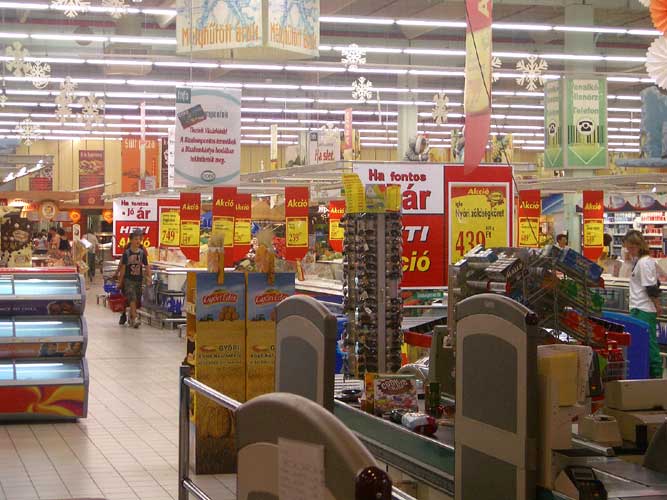
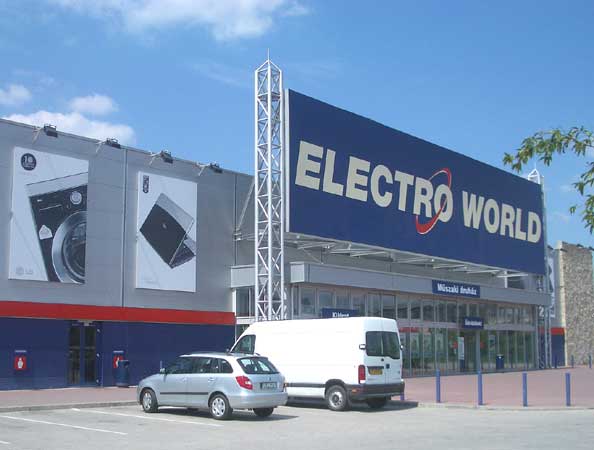
As we continued through Szentendre and into the hills to Gabor's home, we saw many single family homes. From the hill above Gabor's home, we could see many red rooftops among the trees, nestled into the folds of the hills. Had American suburbia reached Hungary?
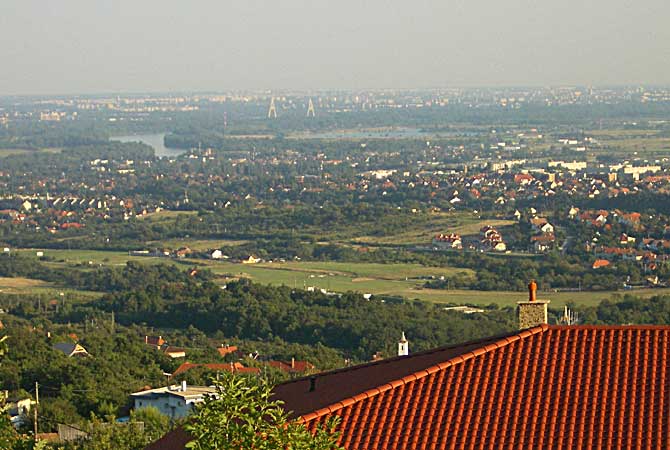
During the next days, we made friends with Moszat, Gabor's shaggy dog and spent hours engaged in continuing conversation with Gabor. Through these conversations, Hungary and the Hungarians began to emerge from the shadows. Hungary began to be a real living place and the Hungarians a special people, whose history was complex, compelling and an essential part of the European story.
The next day, we explored the Baroque heart of Szentendre and realized that Hungary was certainly not an American clone. In fact, the delightful village centre surrounded by shops, including a book store where we purchased a Magyar-Angol (Hungarian-English) dictionary, sidewalk cafes, the lovely churches, the views as we walked along the canals and Duna (Danube) River, and the friendly people charmed us completely. We also realized that European and Japanese tourists had discovered Hungary. Just north of the village centre was a parking lot where a dozen large buses parked to disgorge their camera clicking passengers eager to purchase Hungarian folk arts.
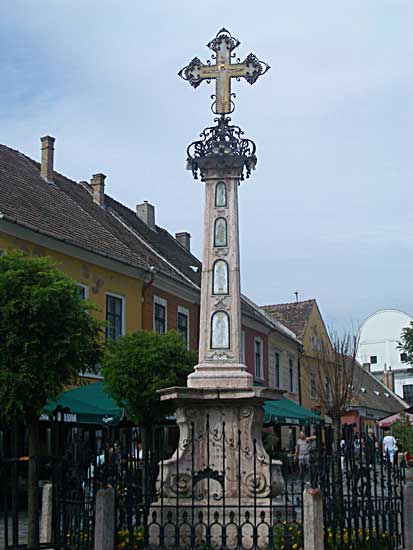
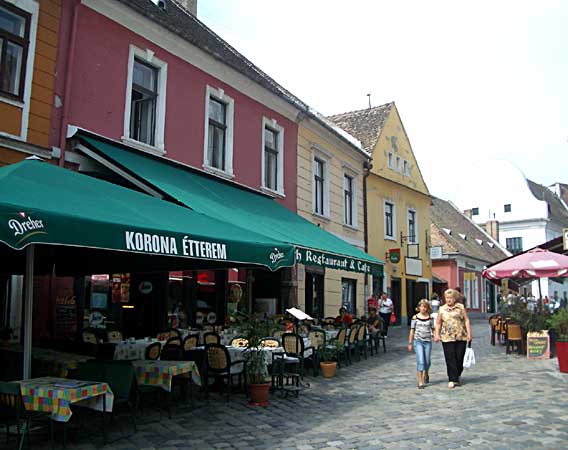
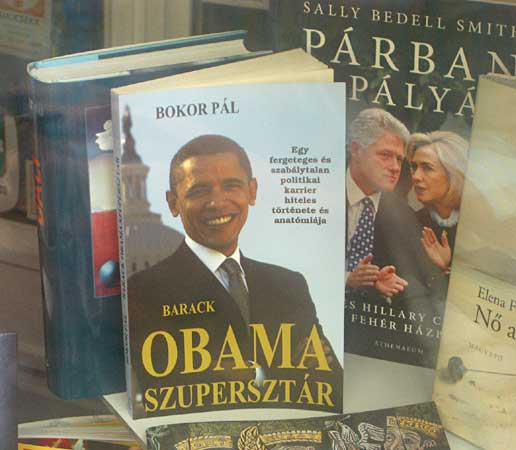
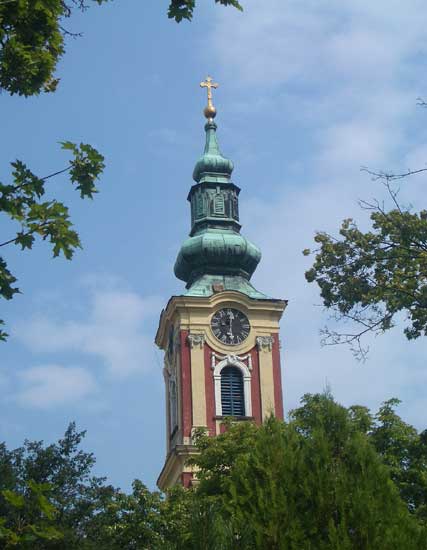
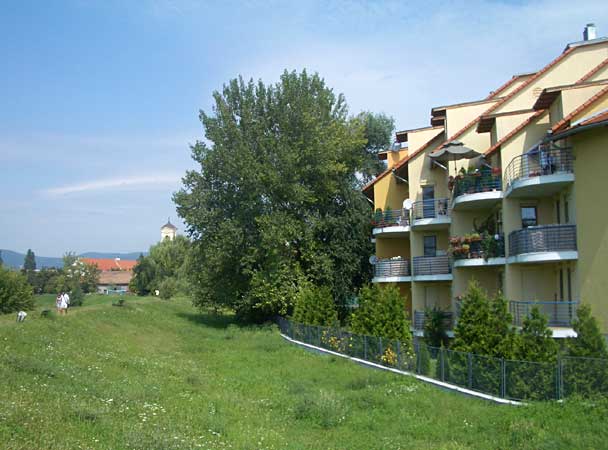
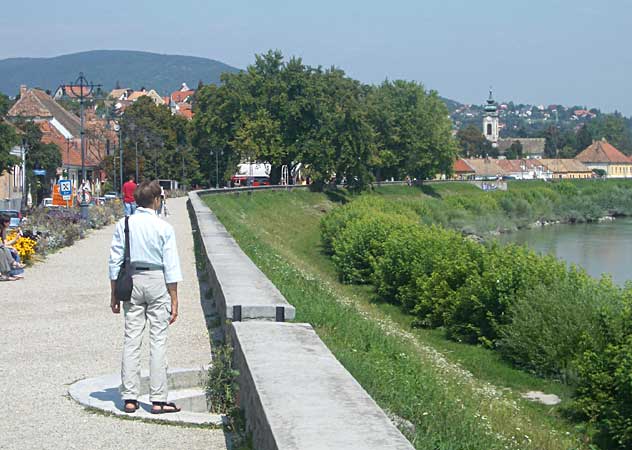
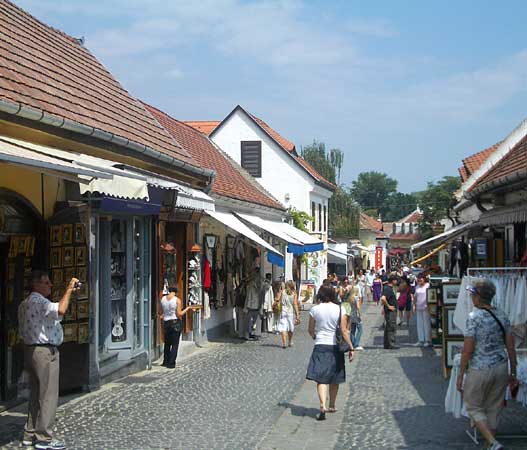
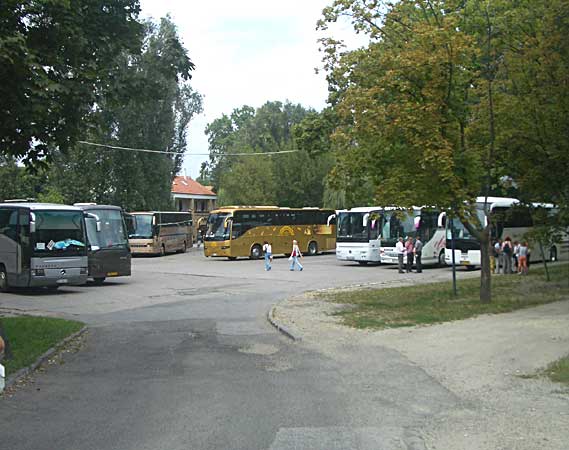
In the afternoon, we had our first try at finding our way in Hungary - back to Gabor's house by bus. With the signs indecipherable we asked fellow passengers for directions and they tried to direct us with hand signs and advice in Hungarian. After a short ride on the wrong bus and finally some help at the central bus station, we found our way home by bus and a short walk. It was reassuring that our 'travel senses' and a little perseverance worked.
The next day was rainy and cool, a nice change from the heat of Italy. The three of us drove to a nearby open air market where, with Gabor's translation, we talked with several Hungarian farmers and bought veggies, fruits and some yummy paprika spiced goat cheese.
On Sunday, the sun had returned so we rode a boat through the great bend of the Duna, passing local folks enjoying a nice day along the river.
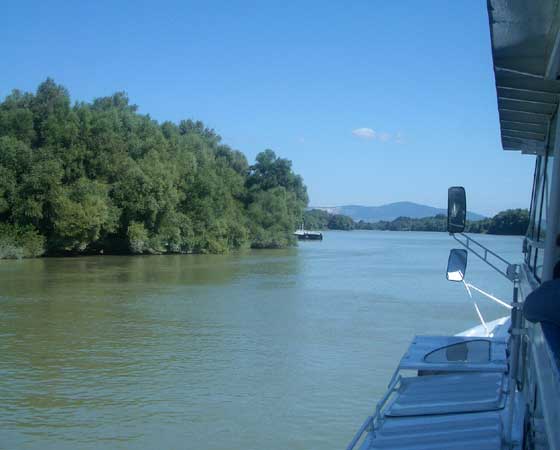
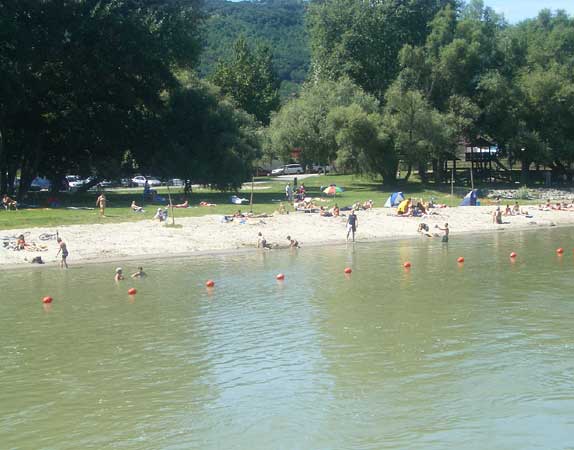
We soon arrived at our destination, Visegrad, a small village with an imposing 15th century Citadel guarding the high cliffs overlooking the river.
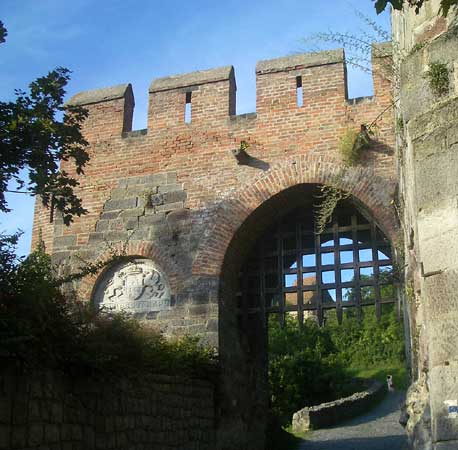
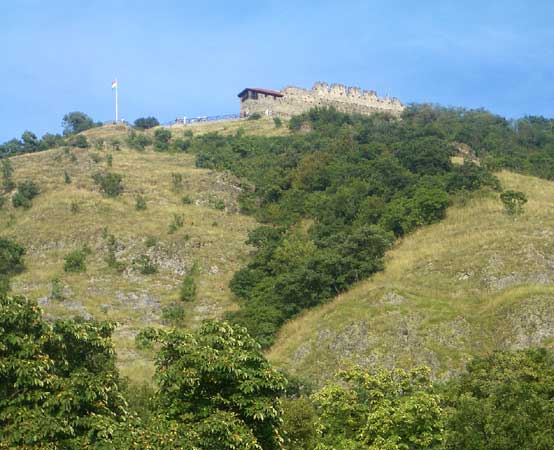
We hiked up to the citadel and palace, where King Matyas and Queen Beatrice ruled, to explore the ramparts and watchtower.
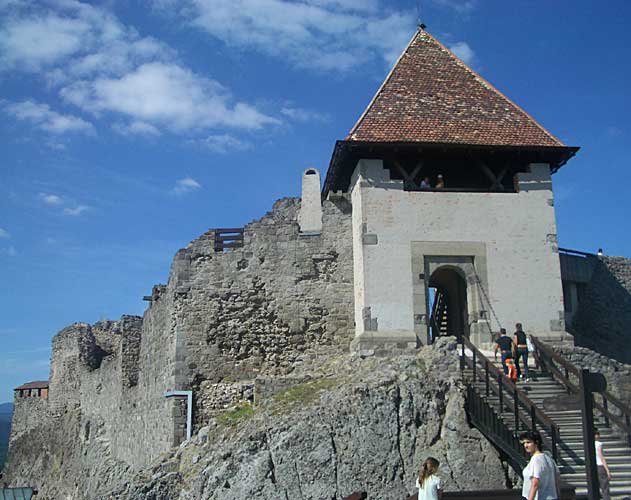
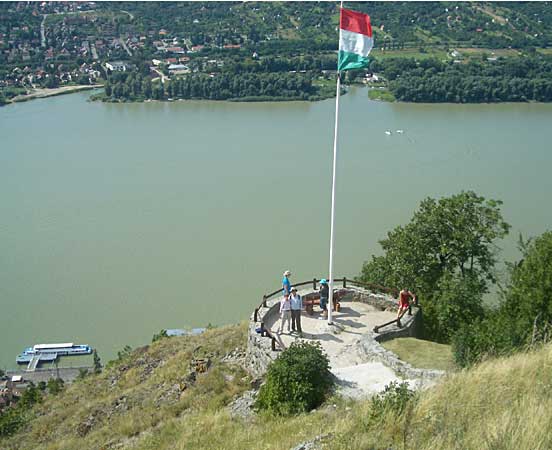
We were awed by the glorious panorama of the Visegrad Hills, the river and the Borzsony range on the other side.
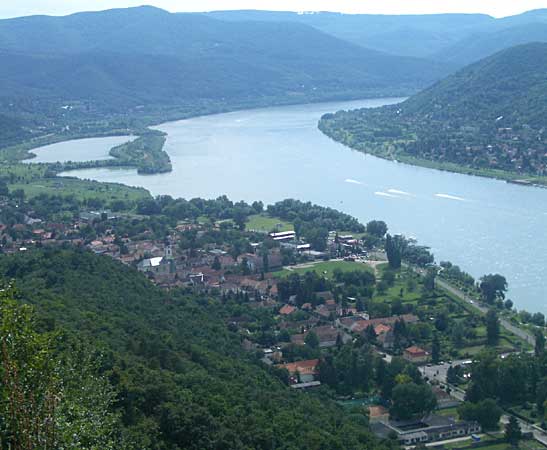
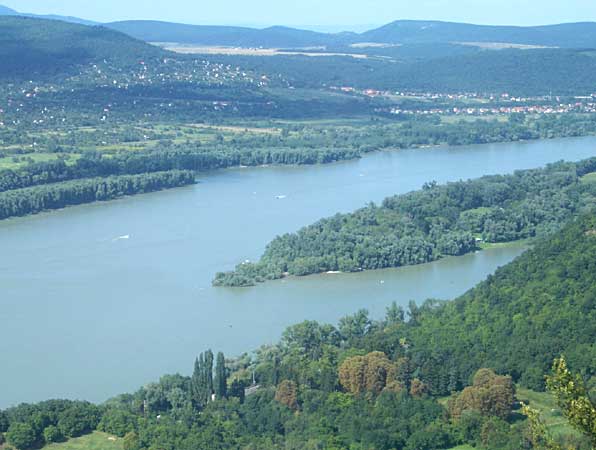
Back down to the river, we looked back up to where we had been. We rode back to Szentendre on the bus, enjoying the views and mingling with the other riders.
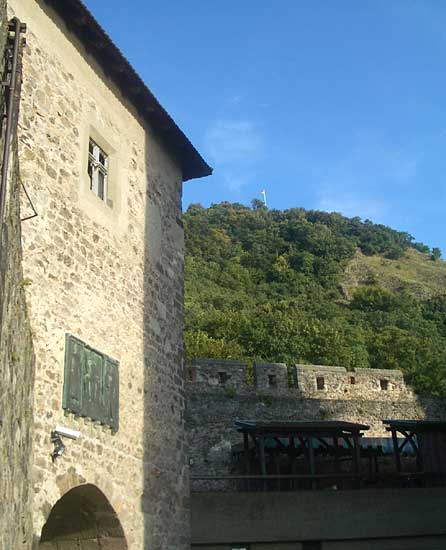
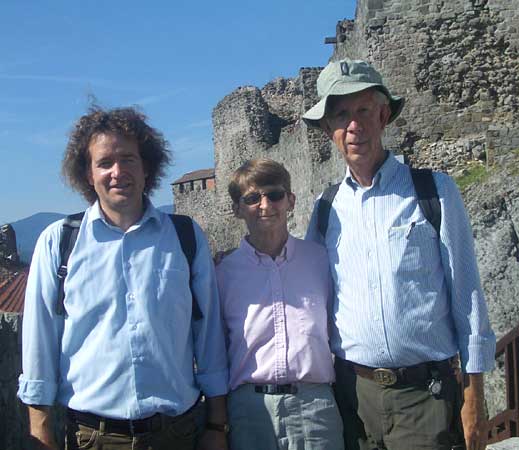
The next day, we packed, said good-bye to Moszat, and rode with Gabor on the HEV train to Budapest. With fond good-byes, we parted and pulling our wheely bags, found our way to the Dominik Panzio, our home for the next 12 days.
We must note that our conversations with Gabor were the most mind expanding, challenging and exhilarating part of our visit. We hope our friendship will continue and hopefully result in a return to Hungary in the not-to-distant future.
Click here to read the story of our adventures in Budapest.
Click here to return to More Travels in Europe - Summer 2008 page
![]()